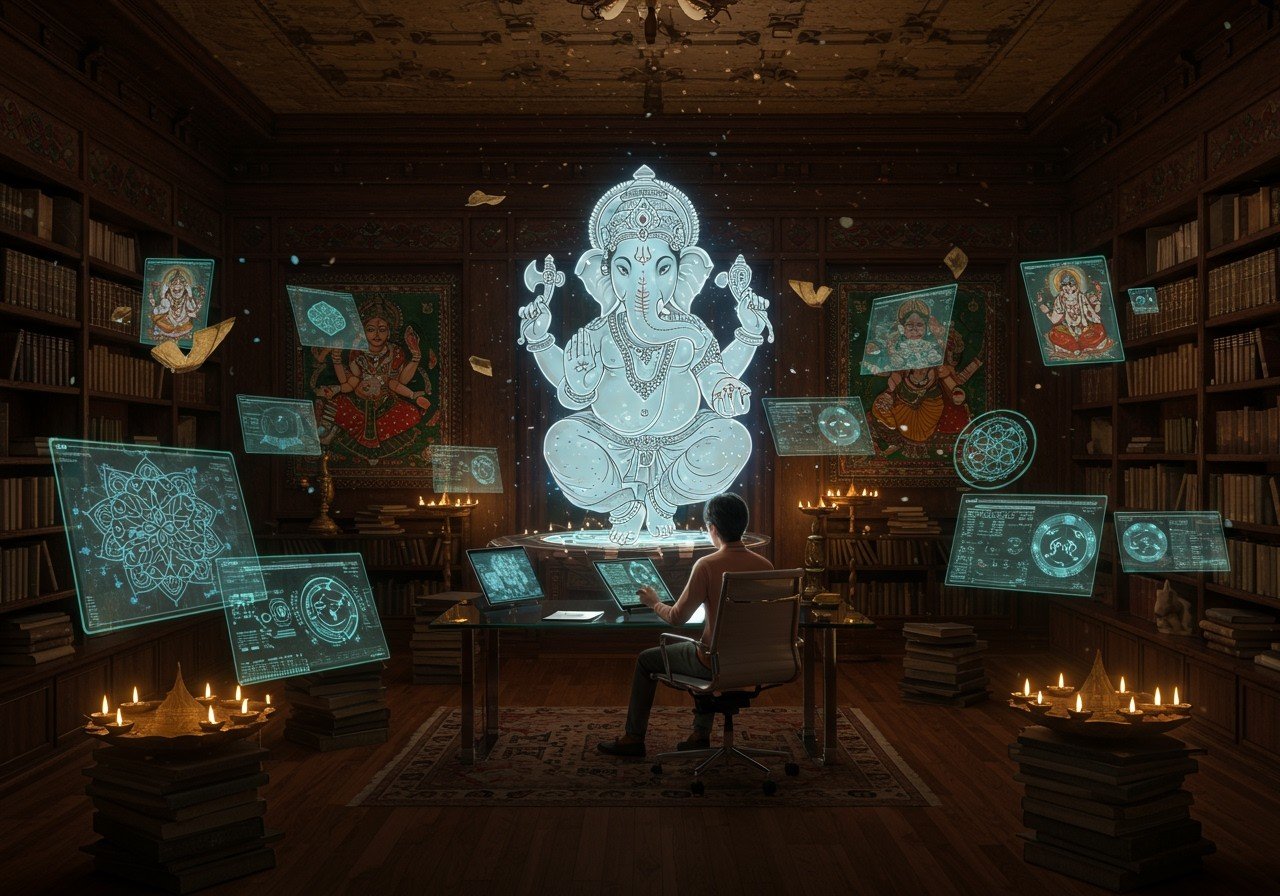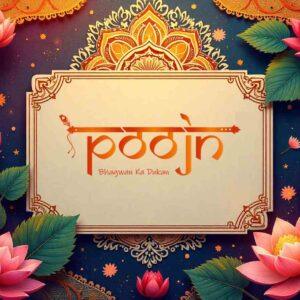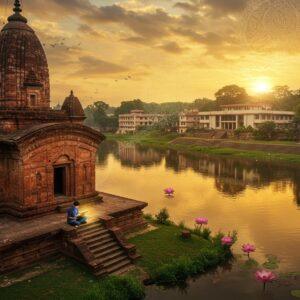Embark on a Spiritual Journey: Exploring Hindu Symbols and Their Significance

Dive into the captivating realm of Hindu symbolism, an integral part of India’s rich cultural and spiritual heritage. Discover the profound meanings behind these sacred emblems and how they embody divine concepts, enriching our understanding of tradition and inspiring authentic religious practices. At poojn.in, we understand the deep respect you hold for these traditions, and we’re here to make accessing genuine ritual items as convenient as possible.
Decoding Hindu Iconography
Hindu iconography is the study of sacred images, often referred to as murtis, and spiritual symbols like mandalas and yantras. It’s about understanding the symbolic language of Hindu deities – their gestures (mudras), attributes (ayudhas), and even their vehicles (vahanas). Even colors hold deep significance, with each hue representing specific qualities and emotions. This intricate language adds layers of meaning to spiritual experiences, from personal prayers to grand temple architecture. Iconography is intrinsically linked to Hindu mythology, breathing life into the stories of the deities. For instance, Lord Vishnu’s blue skin symbolizes his boundless, all-encompassing nature, while his majestic vehicle, Garuda, embodies speed and agility. These symbols help devotees forge a deeper connection with the divine, enriching their spiritual practices. Want to learn more about Hindu philosophy? Check out our insightful blog post on Hindu Philosophy Explained: A Beginner’s Guide.
A Deeper Look at Hindu Symbols and Their Meanings
Hinduism is adorned with a rich tapestry of symbols, each carrying profound spiritual meaning. These symbols represent deities, philosophical concepts, and time-honored traditions. Let’s explore the meanings behind some of the most prominent symbols:
Om/Aum (ॐ)
Considered the most sacred symbol in Hinduism, Om represents the primordial sound of the universe and the ultimate reality, Brahman. It is chanted at the beginning and end of prayers and mantras, signifying the auspicious start and conclusion. The three sounds within Aum (A, U, M) are often associated with the Hindu trinity: Brahma, the creator; Vishnu, the preserver; and Shiva, the destroyer.
Swastika
The Swastika embodies good fortune, prosperity, and well-being. Its name, derived from Sanskrit, literally means “well-being.” This ancient symbol has been revered for millennia by Hindus, Buddhists, and Jains alike.
Lotus (Padma)
Emerging pristine and beautiful from muddy waters, the lotus flower symbolizes purity, love, and spiritual awakening. It represents the potential for enlightenment even amidst life’s challenges. Hindu deities are often depicted seated or standing on a lotus, signifying their divine purity.
Shiva Lingam
Representing Lord Shiva, the Shiva Lingam is a symbol of fertility, strength, and the cyclical nature of creation and destruction. It signifies the divine energy that pervades the universe.
Trishula (Trident)
Lord Shiva’s weapon, the Trishula, symbolizes control over the mind, body, and spirit. It also represents Shiva’s role as the destroyer of evil and ignorance, paving the way for positive transformation.
Conch (Shankha)
Associated with Lord Vishnu, the conch shell symbolizes the sacred sound of Om. It is often blown during Hindu rituals, its resonant sound believed to dispel negative energy. The conch also represents wisdom and the primordial sound that birthed the cosmos.
Tilak/Tilaka
Applied to the forehead, often during religious ceremonies, the Tilak signifies sanctity and respect. Different shapes of the Tilak can indicate devotion to a particular deity. For example, a U-shaped Tilak often represents devotion to Vishnu, while three horizontal lines may signify devotion to Shiva. You can find all the necessary items for applying tilak on your forehead, at Poojn.in.
Sri Chakra Yantra
Also known as the Sri Yantra, this complex mandala comprises nine interconnecting triangles, representing the goddess Tripura Sundari. It is a powerful symbol used in meditation and tantric practices.
Vibhuti
Vibhuti is sacred ash, often obtained from consecrated fire ceremonies (yagnas and homas). It is considered a symbol of purity and is often applied to the forehead as three horizontal lines, signifying devotion to Shiva.
Banyan Tree
The Banyan tree, or Vat Vriksha, symbolizes long life, immortality, and robust health. Its expansive branches and roots represent the interconnectedness of all life.
Kaal-chakra
The Kaal-chakra, or Wheel of Time, represents the cyclical nature of time, the perfection of creation, and the continuous cycle of birth, death, and rebirth. Its eight spokes represent the eight directions.
Poojn.in: Your Guide to Hindu Iconography
For those seeking a deeper understanding, poojn.in offers a wide selection of authentic items and resources: from beautifully crafted deity idols and informative books to all the essentials for your puja rituals. Need a specific item? We’ve got you covered! Browse our impressive collection of decorative items, holy books, and even holy clothing. We’ve also partnered with trusted brands like Falcon, check out their range here. Looking for the perfect murti for your home? Discover our stunning brass Panchmukhi Hanuman idols in various sizes: 5-inch and 13-inch. Also, explore our exquisite brass Lord Kubera murti, the god of wealth and prosperity. Have questions? Our knowledgeable team is available via phone at 03369029784 or WhatsApp at 9476142738.
Embracing the Timeless Wisdom of Hindu Iconography
Hindu iconography offers a gateway to profound spiritual insights and enduring traditions. Each symbol whispers a story, connecting us to the divine and guiding us on our spiritual paths. In today’s digital age, accessing these symbols and their wisdom is easier than ever. At poojn.in, we’re committed to providing you with authentic, high-quality products that enhance your spiritual journey. Explore our collection and bring the blessings of tradition into your home.
Frequently Asked Questions About Hindu Iconography
What is Hindu Iconography? Hindu Iconography is a visual language, using statues, paintings, and symbols to represent Hindu deities, narrate their stories, and convey deep spiritual meanings.
Why is it important? Hindu Iconography plays a vital role in understanding the cultural and spiritual heritage of Hinduism. It provides a window into the rich tapestry of beliefs, rituals, and traditions that have shaped the lives of millions for centuries. Delve deeper into the significance of Hindu symbols by exploring our blog post on Hindu Symbols Explained: Their Meanings and Importance.
Where can I find resources? You can find a wealth of resources on Hindu Iconography in libraries, online bookstores, academic websites specializing in religious studies, and dedicated online platforms like poojn.in. We’ve curated a collection of essential puja items, including those featuring traditional Hindu symbols, available at Rudraksha and Tulsi: Sacred Hindu Symbols Explained.
Are there online courses? Yes, numerous online courses are available on educational platforms that offer comprehensive lessons on Hindu Iconography, often including video lectures, interactive exercises, and assignments. Learn more about incorporating sacred rituals into your life with our beginner’s guide to Yantras and Yagyas Explained: A Beginner’s Guide.
What should I look for in a resource? When choosing resources, prioritize authenticity, detailed explanations, and references to ancient texts to ensure the accuracy and depth of the information.


